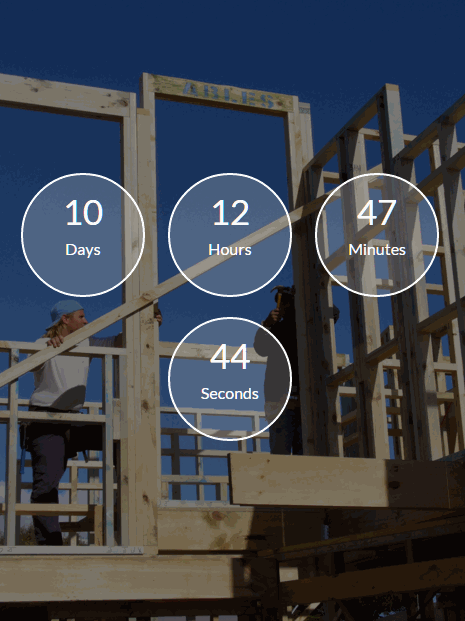Shiny New Toys: CSS, Testimonials, Events, and Social Buttons
This week we cover 5 brand new Shiny Toys on the WordPress Plugin Directory that address Custom CSS, Testimonials, Events, and Social Share Buttons.
It’s always interesting to me when several new things come out at the same time. It seems recently there’s been a slew of plugins dedicated to adding Custom CSS to your site. We’ll review one this week. This week we also see two new plugins that enable you to add testimonials to your site. Do plugin author’s review the Repo before they build their shiny new toys? I assume so. And I wonder what is provoking the development of these plugins in clusters like this. Is there a special need for Custom CSS that is unmet, or testimonials? Mysteries of the WP Universe, these are.
Let’s kick off with the Custom CSS plugin:
This plugin adds a simple but elegant text editor under your Appearance menu for the purpose of adding custom CSS to your website. It has a few different “themes” for the text editor so you can have your own look/feel and syntax highlighting. Unfortunately the theme setting didn’t save for me, hopefully that will be repaired soon.
As with other Custom CSS plugins like this one, I think they really miss the mark. Just being able to add naked custom CSS into an editor isn’t all the useful or educational for the average WP user. Instead, a plugin like Modular Custom CSS allows users to enter their custom CSS in the Customizer and see the changes happen instantly in-browser. Honestly, I’m not really interested in plugin like Super Custom CSS until they can provide a better user experience than Modular Custom CSS or provide some other added advantages.
What I do want to say though about this plugin is it seems that the author (iamaliiraja) is relatively new to WordPress, and comes from Rawalpindi, Pakistan. The plugin author stats on their profile:
I came to know about wordpress from one of my friends, Now I am working in wordpress for last 2 years!
It’s nice to see new engagement like this from folks who are just getting exposed to WordPress. It’s an encouraging symbol of how global WordPress has become and is quickly becoming more and more. So, despite my criticisms of this plugin in general, I wish the best to iamaliiraja in all she/he does!
This next plugin comes from an author I’m familiar with. Evan Herman built a great little plugin a while back called Timeline Express. It was one of the first plugins I came across on the Plugin Directory that emphasized purchasing a “Support License”. I think it’s a really brave monetization model. Rather than having a strict Free/Pro model, he released a very robust free plugin on the Repo and sells licenses for Support. It makes a lot of sense, since that is where the actual costs of the plugin come from (once the major development of the plugin is over that is).
As with Timeline Express, Evan has put together a solid plugin with lots of great features which is very much in line with best practices in WordPress coding standards and methods. Client and Product Testimonials basically gives you a Custom Post Type called “Testimonials” and a Taxonomy called “Clients”. You create your Testimonials and choose the “client” from a list.
This is a freemium plugin, so the Pro version has additional features which are appealing. Particularly the ability to add Video Testimonials into your post.
Once you have a series of Testimonials you can embed them on your site in a couple different ways via the shortcode or a widget.
The one feature request is that I wish you could create a new Client while in the Testimonial edit screen, similarly to how to can create tags or categories on the fly when on the Post edit screen.
Overall, this is a strong and robust plugin with great free features, even better Pro features, and comes from an experienced and reliable WordPress dev. If you need this type of functionality, this will get it done for you.
The second Testimonials plugin goes a very different route. As much as Evan’s CAPT plugin adhere’s to WordPress conventions, Excited! Testimonials Showcase blows the conventions away. The plugin interface looks nothing like your standard WordPress admin screen. It’s modern and sleek, it’s dynamic, and fully ajax-ified. From what I can see it’s mostly a lot of Backbone and AJAX.
My friends Roy Sivan and Josh Pollock have been doing interesting stuff with Angular in the WordPress admin area lately, so it’s cool to see this take on the admin area as well.
Unfortunately, for all the pizazz, once I finally figured out where to find the shortcode (it wasn’t easy to find) it output nothing but the shortcode itself for me. So I can’t tell you much about the actual presentation of the testimonials. What I can say is if this bug gets fixed relatively quickly, then this plugin will have a lot to offer. It’s very robust and obviously took quite a bit of development time. There are many fields and display options.
It’s really encouraging to see plugin authors taking bold leaps like this with their plugins. But at the end of the day, the plugin still needs to perform with the nuts of bolts of what makes for a good plugin. Perhaps all the attention to sliding dynamic modals ended up distracting this author from registering the shortcode correctly.
This next plugin goes into an area I’ve never dealt with before: Push Notifications. I’d love to hear some comments from readers who have implemented push notifications with success on a website. It feels like it could be a powerful way to engage your audience — given that they are a very loyal audience. I mean, if they are casual readers, I highly doubt they’d want an alert popping up on their screen because you wrote a post.
Regardless, this plugin leverages the online service called PushEngage. It’s free for 2500 subscribers. It allows you to create, track, and monitor push notifications. The plugin allows you to have these notifications triggered by events that happen on your website. For example, every time you publish a new post you can have it send the link to your subscribers with a custom title message and a UTM query string at the end for Google Analytics campaign monitoring purposes.
Despite having almost zero experience with this stuff, I was able to create my API key, a few custom notifications, and trigger them successfully for myself in short order.
I’m not convinced that this type of functionality is really here to stay, so I’m not sure whether tracking the progress of this plugin is valuable or not. But if demand for Push Notifications do rise this year, then this is an early entry worth watching.
For the last few years The Events Calendar has simply dominated the WordPress space when it comes to events. So when a new Events plugin shows up I take interest. Folks, this is a space that is ripe for a serious competitor!
The Event WP — as it stands today — is no competitor for The Event Calendar. Instead, it’s a bare-bones, simple, yet elegant event solution. It’s a simple post type that just requires the basic information about an event (date, time, location) and it displays it as a post, and archive page.

The unique twist is that it has this nice animated circle countdown until the event happens. It’s a nice touch.
There’s currently no settings page at all. It seems to be relatively easy to customize via templating (though I didn’t dig into it too deeply). I think there’s a lot of room for growth with this little plugin. Both plugin author’s also seem to be relatively new to WordPress and from South East Asia.
One really obvious thing missing is adding a Google Map to the front-end display. You choose your location for the event via Google maps, but there’s no Google map on the actual page. I think that’s an oversight.
It’s worth a try if you have only minimal needs for an Events post type and like the countdown effect.
The last two plugins here are social sharing plugins. This is a very crowded space, but I still continue to believe that there’s room for real innovation and excellence when it comes to social sharing buttons.
Social Pug does a fair job of giving the user just the right amount of control to easily add social sharing buttons with size, shape, and social count options fairly easily and intuitively. Once usability issue I had was that the settings pages for the Floating Sidebar and the “Content” buttons looks very much like a standard WordPress settings page. But after hitting the familiar blue “Save Settings” button, nothing changed on the front-end. This is because they’ve added a big green toggle at the top right of these pages which turns each feature completely on or off.
The way social sharing plugins really make it or break it though is with performance. Those social share counters can really start to cause performance issues on your site. This is why the Jetpack social share feature is so popular. All that server resource is done off your site and on the wordpress.com servers instead, drastically increasing performance. Unfortunately, I can’t speak to the performance without trying it out over weeks on popular articles. But our site is in need of a solid social share button solution, so watch for what we might implement over the next weeks!
Lastly, this plugin has a Pro version as well, with some nice features. But the persistent and non-dismissable admin notification throughout the whole admin is really bothersome. I’d really recommend the author read our article on freemium admin notices and make some important changes there.
Lastly, Fast Social Share Buttons is exactly that: Fast. There’s just one settings page that let’s you choose which channels you want to show, whether they have “rel=” attributes or not, your twitter handle for an @-mention appended to the Tweet and a custom label. Once you hit save, you’re done!
But it’s not just fast to set-up. It’s actually primarily fast because the buttons themselves require no javascript whatsoever. This is a nice touch. The simple, clean, and fast-loading buttons make sharing content very easy and non-obtrusive.
The only glaring issues is a lack of ability to choose whether buttons should appear on pages or posts, at the top or bottom of the content. Currently, it’s ALL pages and posts, only at the bottom of the content, and at the bottom of the posts on the archive page as well (which is really unnecessary).
I love plugins with very few options, but this oversight makes the plugin almost un-useable for most websites. Still, I have a feeling if I dug into the code a bit I’d find a filter or two that could give me the options I need.
